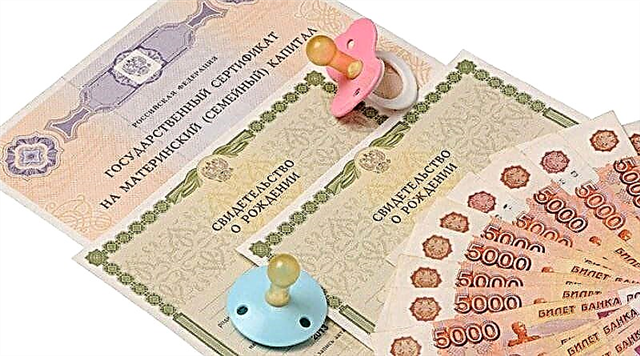
A fragrant mint leaf can even turn a simple tea into a tasty and healthy drink, which, among other things, very gently and gently affects the nervous system, calming, improving sleep and appetite. But with the onset of pregnancy, women are more attentive to what they eat, and therefore the question quite justifiably arises - is it permissible to use mint in an interesting position.

What are the benefits for pregnant women?
Usually, mint leaves and their benefits for humans do not raise questions from doctors, the healing properties of the plant have long been known, they are widely used in the pharmaceutical industry and in folk medicine. But when it comes to expectant mothers, many doctors oppose the use of fragrant mint.... It should be noted that among obstetricians-gynecologists there is no consensus on whether mint is permissible or not during pregnancy, whether it can be consumed or is it better to abstain. There are two positions according to which some doctors strongly advise their patients to tea with mint, while others oppose.
Mint is a medicinal plant listed in the official register of medicinal plants. And for this very reason there is reason to assert that mint certainly affects a woman and her baby. Therefore, like any other medicinal substance, it should be taken under the supervision of specialists. From a practical point of view, then the amount of active substances present in 2-3 mint leaves, which are used to brew tea, cannot harm either the expectant mother or her baby.
External use of products containing mint does not raise any questions at all - a woman at her discretion can use mint oil, for example, to combat nausea in case of toxicosis in the early stages, if she is not allergic directly to mint oil.

The essence of medical controversy around mint boils down to the presence in the plant of a fairly impressive amount of phytoestrogens. These substances are plant analogues of sex hormones. During pregnancy, progesterone rules the woman's body, and an increase in the amount of estrogen is noted only immediately before childbirth. Therefore, opponents of mint during pregnancy believe that the use of the plant while the baby is waiting increases the likelihood of an increase in the tone of the uterine muscles and increases the risk of miscarriage.
Supporters of mint say that vasodilating effects and pronounced hormonal effects are possible only when a woman uses mint in large quantities and systematically for a long time. One-time use will not hurt. Now that you are familiar with both positions, it is up to you and your doctor to decide whether to consume or stop using mint.
As for the beneficial properties of a medicinal plant, it would be unfair not to say that mint can be very useful. It contains a high amount of essential oils, which give the plant such a stunning unique scent. And it is they who provide pronounced sedative effect and mild analgesic effect.
These properties of the plant were noticed by ancient healers, and then the question of estrogens was not at all, all pregnant women took fragrant decoctions of mint and other herbs and felt great. It was recommended to put mint branches under the pillow for a better sleep., after all, in ancient times, doctors perfectly understood that for a future baby there is nothing more important than maternal calmness and good sleep.

In addition to essential oils, mint contains vitamins, and B vitamins are in the lead, there are minerals - phosphorus, potassium, sodium. Amino acids and tannins are present in small amounts.
If you approach the issue of using the plant wisely, then mint can be very useful for a pregnant woman. Doctors often recommend mint for colds. A woman in a position is limited in the choice of pharmacy medicines, especially in the early stages, and therefore mint tea can be an excellent pain reliever that will quickly help reduce the intensity of muscle and headaches.
Concentrated formulations, such as drops or water mint tincture, have the ability to dilate blood vessels. And this property can be used for hypertension. Therefore, women prone to preeclampsia, thrombosis can be recommended not preventive, but therapeutic doses of mint, but in this case, the appointment is carried out strictly by the doctor. He will also determine the dosage.
In case of disruption of the stomach, intestines, bloating or flatulence, mint helps to quickly cope with unpleasant sensations. With the nausea characteristic of toxicosis, pregnant women are often advised to drip a few drops of peppermint oil onto a handkerchief in order to inhale it during the most severe attacks of nausea.
With severe stress, emotionally unstable state tea with mint will help you calm down, fall asleep, have a good rest and then stay in a normal mood. Mint is recommended for women with weak immunity, its moderate addition to tea helps to increase the body's natural defenses.

External use is not limited. Mint decoctions and oils can be used for dry skin, cracks, pustular rashes on the skin. Applying an essential oil to your feet reduces sweating.
Contraindications and possible harm
In order for a woman to understand an issue in which even doctors cannot come to a common denominator, one should be very careful. In the first trimester of pregnancy, it is not recommended to lean on mint, taking it only in case of the problems described above after prior consultation with a doctor.
Considering that the plant contains phytoestrogens, in order to eliminate the risk of miscarriage or premature birth, experts advise women not to use mint if they have varicose veins. Women with low blood pressure should not drink peppermint tea. Hypotonic people after eating mint may experience severe dizziness, loss of consciousness, severe weakness. If a woman has already been diagnosed with a threat of spontaneous abortion, it is better to use other sedatives.
When vomiting is not directly related to toxicosis, mint is also prohibited. At any time, expectant mothers who have a reduced number of platelets in their blood or have problems with kidney conditions are also advised to avoid it.
Mint can harm any pregnant woman and at any time if the plant is consumed in large quantities. You should know that medicine clearly describes the symptoms of mint poisoning in case of its overdose. The woman has severe repeated vomiting, stomach ache, dizzy, heartbeat becomes slower. In this case, the expectant mother needs urgent emergency medical care.


After childbirth, a delicious and aromatic mint tea is not recommended for anyone, since the medicinal plant has an overwhelming effect on lactation.
What kind of mint is best to use?
In everyday life, we often call a medicinal plant simply mint. But in fact, there are 25 main types and more than a dozen subspecies of the plant - there are peppermint, lemon, mountain and curly mint, as well as bergamot, water, Japanese and others. In Russia, traditionally, the most commonly used peppermint.
You will find it in any pharmacy, and therefore it is permissible for use during pregnancy, of course, in the prescribed dosages and in compliance with all safety requirements.

Terms of use
If you look carefully at the instructions for using the mint collection, then you will not find in it a categorical prohibition on using during pregnancy, but each instruction will indicate that the drug needs to be taken with caution. Based on the possible danger of a medicinal plant, women in position are advised to use mint in this way:
- as part of green or herbal tea with lemon balm, thyme or separately;
- fresh - the leaves can be chewed with an attack of nausea;
- in the form of a decoctionto gargle a sore throat or treat the skin;
- in the form of oil - very dosed for mild aromatherapy;
- in the form of mint tablets or lozenges for resorption from sore throat.


Each of the listed types requires compliance with separate application rules.
- Infusion. Alcoholic infusion of mint is strictly prohibited for expectant mothers. It is permissible to brew and drink only water infusion. For example, in case of a cold that happened at the wrong time, you can use no more than a tablespoon of herbal collection in a glass of boiling water. It should be insisted for at least a quarter of an hour. With this attitude, you can gargle, take it warm in an amount of no more than two tablespoons up to five times a day. If there is a bloating of the intestines, and colic annoys the pregnant woman greatly, the infusion is prepared with an increase in the amount of plant materials approximately twice, all for the same glass of water. It is recommended to take a tablespoon of infusion for women with meals.
- Decoction... It is strictly forbidden to take it orally in the early, late and other periods. In the broth, the content of all active substances is much higher than in the infusion, and therefore the broth can be used exclusively for external purposes.
- Butter. Inadmissible for oral administration. Only topical use and a moderate amount for inhalation or an aroma lamp will not harm. It is very important to read the instructions for the essential oil bottle; the dosage for the expectant mother should be half that indicated for an adult. No more than two drops of oil are added to the lamp for every 10 square meters of housing. It is not recommended to inhale vapors for more than a quarter of an hour. You can add the same two drops of oil to the bath. It is allowed to take such water procedures before going to bed for a maximum of 25 minutes.
- Tea... It must be freshly brewed, and it is permissible to use both ready-made tea bags from the pharmacy and fresh mint leaves. If you purchased sachets, brew them according to the instructions. If you have mint sprigs, then steep them for ten minutes. You can add a little milk to mint tea. In the second trimester, it is permissible to drink up to three cups of this tea a day. In the 1st and 3rd trimesters, the amount should be limited to one cup.
- In a different form. Fresh twigs of the plant can be used by adding them to salads, soups. Also, according to the assurances of specialists in the field of alternative medicine, it is very useful to apply fresh leaves of the plant to the temples with a severe headache. If you prefer to chew mint leaves or stalks for nausea or to freshen your breath, then stick to moderation - no more than three branches a day.
Please note that the simultaneous use of several forms of mint is unacceptable. If you drink tea with this aromatic plant, refrain from aromatherapy or infusion. If you use mint lozenges, try not to drink tea with it. Otherwise, it will be very difficult to comply with the correct and strict dosage.
According to reviews, which there are a great many on the Internet, many women use mint while waiting for a baby. They do not reveal any negative effects or consequences with a reasonable approach to the doses of the medicinal plant.
For what else you can and should eat for pregnant women, see the next video.



